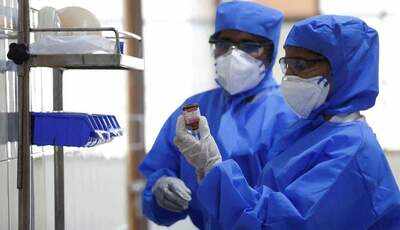
An uncontrolled surge of Covid-19 cases in July led to the imposition of an unexpected but necessary weeklong lockdown in Bengaluru, providing the Karnataka Covid-19 Task Force time to understand the crisis in order to manage it better.
The increase in new cases certainly points to spread; higher deaths point to the need for more ICU beds, and rise in recovery numbers indicates a greater percentage of mild patients.
We need to now move beyond absolute numbers and track metrics like Test Positivity Rate (TPR), Case Fatality Rate (CFR), Patient Recovery Rate (PRR) and Doubling Rate (DR).
When the 21-day nationwide lockdown started on March 22 to Break the Chain, the general expectation was that life would go back to normal on the 22nd day. The longest lockdown in the nation’s history had lasted 68 days when it was finally lifted on May 31.
When the unlocking commenced, most people thought the virus had been chased away and the coast was clear to venture out unprotected. The extremely high virulence of the novel coronavirus helped the infection spread fast and wide, posing a challenge to extensive contact tracing.
So, what do we do now to course correct? The answer lies in testing with reason and outcome mapping.
Let’s start with TPR i.e., the number of positive cases per hundred tested. The higher the number, the higher the spread. However, the variance in percentages of TPR between RT-PCR and Antigen tests is a concern.
Slow turnaround times limit the capacity of RT-PCR tests, whereas point-of-care Antigen tests are rapid and can be done on a mass scale. Delhi, where the ratio of RT-PCR to Antigen tests was 30:70, reported a TPR of ~40% for RT-PCR tests and ~7% for Antigen tests, raising concerns over test reliability.
The fact is that Antigen tests only work with high sensitivity when the viral load is high. The lower TPR in Antigen testing suggests the viral load in possible False Negative cases is too low to detect and therefore too low to infect.
A smart combination of RT-PCR and Antigen tests in the same community can help categorise Covid-19 cases as ‘mild’, ‘moderate’ or ‘severe,’ allowing triaging of patients into home quarantine, general wards and ICUs.
To lower TPR, we need to up the ante on surveillance and swiftly quarantine, contain and hospitalise.
We also have to incentivise testing. At present, there is a perceived penalty by the administration on reporting positive cases for fear of a backlash on poor management. Every ward, taluk and panchayat must be incentivised to increase test reporting.
Hospitalising moderate to severe cases in time will help reduce CFR. Delayed test reports, reluctance to report symptoms on time and social stigma of testing positive are key deterrents to hospital triaging.
Adoption of standard protocols along the disease treatment continuum can help decrease the CFR. Currently, there is wide variation between the best supportive care delivered in private and government hospitals.
Doctors need to share best practices with their counterparts in other cities like Mumbai, Delhi and Ahmedabad to reduce mortality and bring down the CFR.
Patient Recovery Rates and Doubling Rates also need to be tracked. Current data put Karnataka’s PRR at ~36%, lower than 63% nationally. CFR at 2% is a tad lower than the national average of 2.45%. DR at every 10 days compares unfavourably with 55 days nationally.
A return to the situation at the end of May, when TPR was below 5%, CFR less than 1% and a DR of over 25 days, will recreate a haven and restore faith in the Karnataka Model for Covid-19 management.
Kiran Mazumdar-Shaw is chairperson of Biocon. RK Misra is non-resident scholar, Carnegie India
The increase in new cases certainly points to spread; higher deaths point to the need for more ICU beds, and rise in recovery numbers indicates a greater percentage of mild patients.
We need to now move beyond absolute numbers and track metrics like Test Positivity Rate (TPR), Case Fatality Rate (CFR), Patient Recovery Rate (PRR) and Doubling Rate (DR).
When the 21-day nationwide lockdown started on March 22 to Break the Chain, the general expectation was that life would go back to normal on the 22nd day. The longest lockdown in the nation’s history had lasted 68 days when it was finally lifted on May 31.
When the unlocking commenced, most people thought the virus had been chased away and the coast was clear to venture out unprotected. The extremely high virulence of the novel coronavirus helped the infection spread fast and wide, posing a challenge to extensive contact tracing.
So, what do we do now to course correct? The answer lies in testing with reason and outcome mapping.
Let’s start with TPR i.e., the number of positive cases per hundred tested. The higher the number, the higher the spread. However, the variance in percentages of TPR between RT-PCR and Antigen tests is a concern.
Slow turnaround times limit the capacity of RT-PCR tests, whereas point-of-care Antigen tests are rapid and can be done on a mass scale. Delhi, where the ratio of RT-PCR to Antigen tests was 30:70, reported a TPR of ~40% for RT-PCR tests and ~7% for Antigen tests, raising concerns over test reliability.
The fact is that Antigen tests only work with high sensitivity when the viral load is high. The lower TPR in Antigen testing suggests the viral load in possible False Negative cases is too low to detect and therefore too low to infect.
A smart combination of RT-PCR and Antigen tests in the same community can help categorise Covid-19 cases as ‘mild’, ‘moderate’ or ‘severe,’ allowing triaging of patients into home quarantine, general wards and ICUs.
To lower TPR, we need to up the ante on surveillance and swiftly quarantine, contain and hospitalise.
We also have to incentivise testing. At present, there is a perceived penalty by the administration on reporting positive cases for fear of a backlash on poor management. Every ward, taluk and panchayat must be incentivised to increase test reporting.
Hospitalising moderate to severe cases in time will help reduce CFR. Delayed test reports, reluctance to report symptoms on time and social stigma of testing positive are key deterrents to hospital triaging.
Adoption of standard protocols along the disease treatment continuum can help decrease the CFR. Currently, there is wide variation between the best supportive care delivered in private and government hospitals.
Doctors need to share best practices with their counterparts in other cities like Mumbai, Delhi and Ahmedabad to reduce mortality and bring down the CFR.
Patient Recovery Rates and Doubling Rates also need to be tracked. Current data put Karnataka’s PRR at ~36%, lower than 63% nationally. CFR at 2% is a tad lower than the national average of 2.45%. DR at every 10 days compares unfavourably with 55 days nationally.
A return to the situation at the end of May, when TPR was below 5%, CFR less than 1% and a DR of over 25 days, will recreate a haven and restore faith in the Karnataka Model for Covid-19 management.
Kiran Mazumdar-Shaw is chairperson of Biocon. RK Misra is non-resident scholar, Carnegie India
Quick Links
Kerala Coronavirus Helpline NumberHaryana Coronavirus Helpline NumberUP Coronavirus Helpline NumberBareilly NewsBhopal NewsCoronavirus in DelhiCoronavirus in HyderabadCoronavirus in IndiaCoronavirus symptomsCoronavirusRajasthan Coronavirus Helpline NumberAditya ThackerayShiv SenaFire in MumbaiAP Coronavirus Helpline NumberArvind KejriwalJammu Kashmir Coronavirus Helpline NumberSrinagar encounter
Get the app








